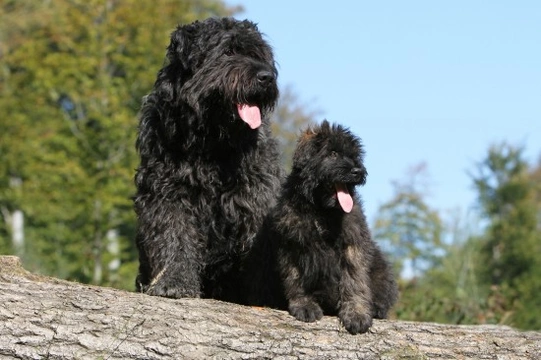
The Bouvier Des Flandres dog traits and characteristics
The Bouvier Des Flandres dog hails from Flanders in Belgium, and was traditionally kept as a herding dog to work with sheep, and for herding cattle. In more modern times, they also have a history as police and military working dogs, as well of course as family pets, and they are now popular in a great many countries including the UK.
They are a very robust breed that likes to spend lots of time out of doors, but they are also gentle, well mannered and loving, and can make an excellent addition to any home. They are large, loyal and brave, and usually get on very well with children, making them an excellent choice of pet for all sorts of people.
If you are wondering if a Bouvier Des Flandres dog might be a good potential choice of pet for you, this article will look in more detail at their core traits and characteristics, to help you to make an informed decision.
Bouvier Des Flandres basic behaviour traits
The main temperament traits of the breed are their open, friendly demeanour, docile natures and friendliness with both the people that they know and with strangers. They tend to be laid back dogs that are not prone to aggression or being overly territorial, and they are also very keen to learn new skills, making them among the most rewarding of dogs to train.
They are confident without being pushy, and are playful, loyal and intelligent, as well as having a reputation for being very brave. Some dogs of the breed do have a tendency to being stubborn and somewhat set in their ways, but good early socialisation, training and boundaries for the dog should ensure that this is manageable.
As a general rule they get on well with children of all ages, and are not prone to being snappy with kids, although it is of course vital to ensure that your children of any age respect the dog and know how to interact with them. They also generally live quite happily with other pets including dogs, and when properly introduced, can live comfortably with cats without showing pronounced hunting instincts towards small pets.
Fitness and exercise
The Bouvier Des Flandres dog is used to spending lots of time outdoors and on the go, and in their working roles, they will cover lots of miles in the course of the average day! While they are not as fizzy and highly strung as other working breeds such as the Border Collie, they do need to have their need for sufficient exercise covered adequately, in order to keep them fit, well and happy. This also helps to keep them on an even keep and keep their temperament and personality laid back and placid, as like any dog, if they do not get enough exercise they will soon become bored, destructive and find ways to entertain themselves. They can live quite happily within the average sized home in suburbia, providing that they have access to a garden, plenty of opportunity to play, and provision made for sufficient walks both on and off the lead. Providing that they are given enough chances to go outside and get enough walks to fulfil their requirements, they tend to be excellent house dogs that are not prone to being destructive or overly energetic when in the house.
They are relatively easy to housetrain, will let you know when they need to go out, and are not one of the breeds that are more likely to try to chew on things in the home or destroy your possessions!
Training
The Bouvier Des Flandres is a rewarding dog to train as they very much enjoy learning new skills and taking on new commands! They are alert and keen to listen and please you, and positive reinforcement training is very effective among dogs of the breed.
They thrive on praise and soon learn what earns them a reward, and can often pick up a wide range of complex and higher level commands, as well as learning tricks! Keeping your dog active and training them on an ongoing basis as they get older is one of the best ways to fulfil all of the dog’s mental needs for stimulation.
Bouvier Des Flandres health
The average longevity of dogs of the breed is between 10-12 years, and they are generally robust and healthy and not what can be classed as a delicate or sickly dog. Some dogs of the breed will live much longer, and it is certainly not uncommon to hear of dogs reaching 15 or even more.
There are some genetically inherited conditions that the breed has elevated risk factors for in general, however, including hip dysplasia, hypothyroidism and cataracts, so it is wise to learn more about these conditions and their warning signs before making a purchase.



